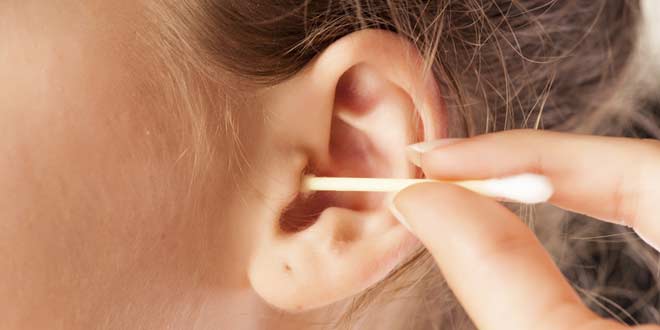
All you Need to Know about Ear Care
We all know the main function of the ear: listening. Despite being one the special sense organs, ears do not get much attention as they should. This oddly shaped piece of cartilage is not only meant for hearing but it also plays an important role in balance of the body.
Orientation of the head is determined by a small part called vestibule inside the ear while cochlear part does the work of hearing and transmitting sound waves into the brain to be translated. Together it is known as the vestibulocochlear apparatus. This part is very sensitive to head movement and slightest of sounds. The way ears are structured they are a little tricky to clean, prone to collection of dust particles and lots of wax accumulation.
Wax is produced only in the outer third of the ear canal. The purpose of ear wax is to trap any bacteria, dust particles; pollens etc that make their way into the ear canal and can cause infection. This wax is the pus outward through ciliary action of small hair in the canal.
This is how ear wax serves as a protecting factor against ear infection. However production of too much ear wax can become a menace, block the ear canal and decrease hearing therefore, it needs to be cleaned. The real question that arises is that how should we clean it?
How to Clean Ears
It is important to keep your ears clean to prevent ear infections and loss of hearing. However, one should keep in mind that ear wax serves a protective mechanism and trying to clean all of it might causes more problems than good. Mostly people use Q-tips to clean their ears. They are inexpensive, easily available and easy to use: insert into year, scrape around to collect ear wax, remove and discard.
Easy. Even though it seems like an easy and effective mechanism, medically it is not correct. Viewing inside your ear with a magnifying glass shows that your Q tip did not really scrape out all the ear wax but only a fraction of it. What happens to the rest? The rest of it gets pushed deeper inside your internal ear. It can damage your ear drum (a delicate membrane significant for hearing). Hence, the only part of the ear that can be cleaned using Q-tips is the outer ear and cartilage. Any similar pointy objects such as key, pen or bobby pins are not suitable for cleaning your ear.
Recommended Methods
Hydrogen Peroxide
Hydrogen peroxide mixed with a little mineral oil put in ear through dropper helps soften and loosen wax present in the ear. Liquefied wax drains out of your ear which can be cleaned using a cotton ball. However, make sure you use small amount of hydrogen peroxide as it can irritate your ears.
Do-it-yourself Ear Irrigation
Mechanism behind any ear cleaning technique is to facilitate the ears self cleaning action. A solution made up of equal parts water, rubbing alcohol and white vinegar is used for ear irrigation. A few drops are carefully put into ear and then drained after a while.
It loosens ear wax which drains with irrigation solution and the mess can be cleaned with a cotton ball. This is a quick, easy mechanism that gets the job done. Keep in mind rubbing alcohol and vinegar is both irritants and might irritate your ear if used more than a few drops.
Profession Ear Syringing
Your health practitioner will perform this procedure. It seems simple but should be applied at home. A syringe is used to squirt water in the ear canal that often the blob of wax blocking the ear. And then pulled out using medical tweezers.
There is a minor chance of ear damage through this method. Side effects include dizziness and nausea that are caused by sudden pressure and temperature of water.
Mineral Oil
Mineral oil alone can be used to clean ears effectively without any side effects. This is because ear wax itself is made of lots of oils. Similarity in properties of both help ears remain protected from dryness and irritation.
Warm or room temperature mineral oil (not baby oil) is poured into an ear through a dropper, cover it with a cotton ball and lie down facing the covered ear upwards. After a few minutes tilt your head and let it drain out along with softened wax. Although this will not help with big blobs, it is a great way of regularly cleaning your ears.
How often you should clean your ears depends on how much wax your ears are producing. Once a day is usually enough for healthy ear canals. People producing too much wax might need weekly irrigation at home or syringing by a professional. Alternatively an Oto-Tip can also be used.
For general ear health, avoid long hours of exposure to loud music with ear phones on. Keep volume to the minimal sound that you can hear to prevent loss of hearing. If your job requires you to e exposed to excessive pollution including dust, smoke or pollens keep your ears covered during working hours.

